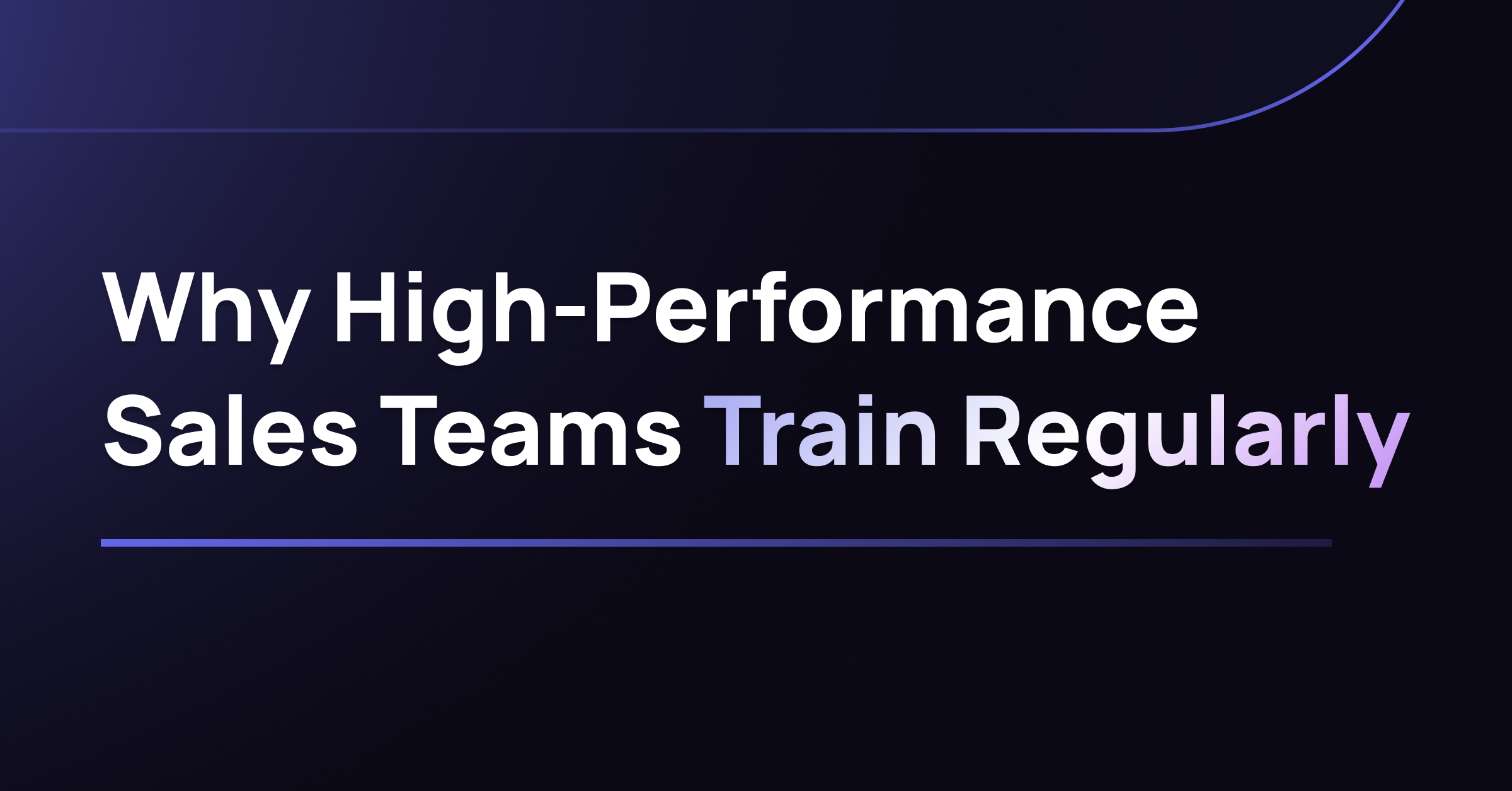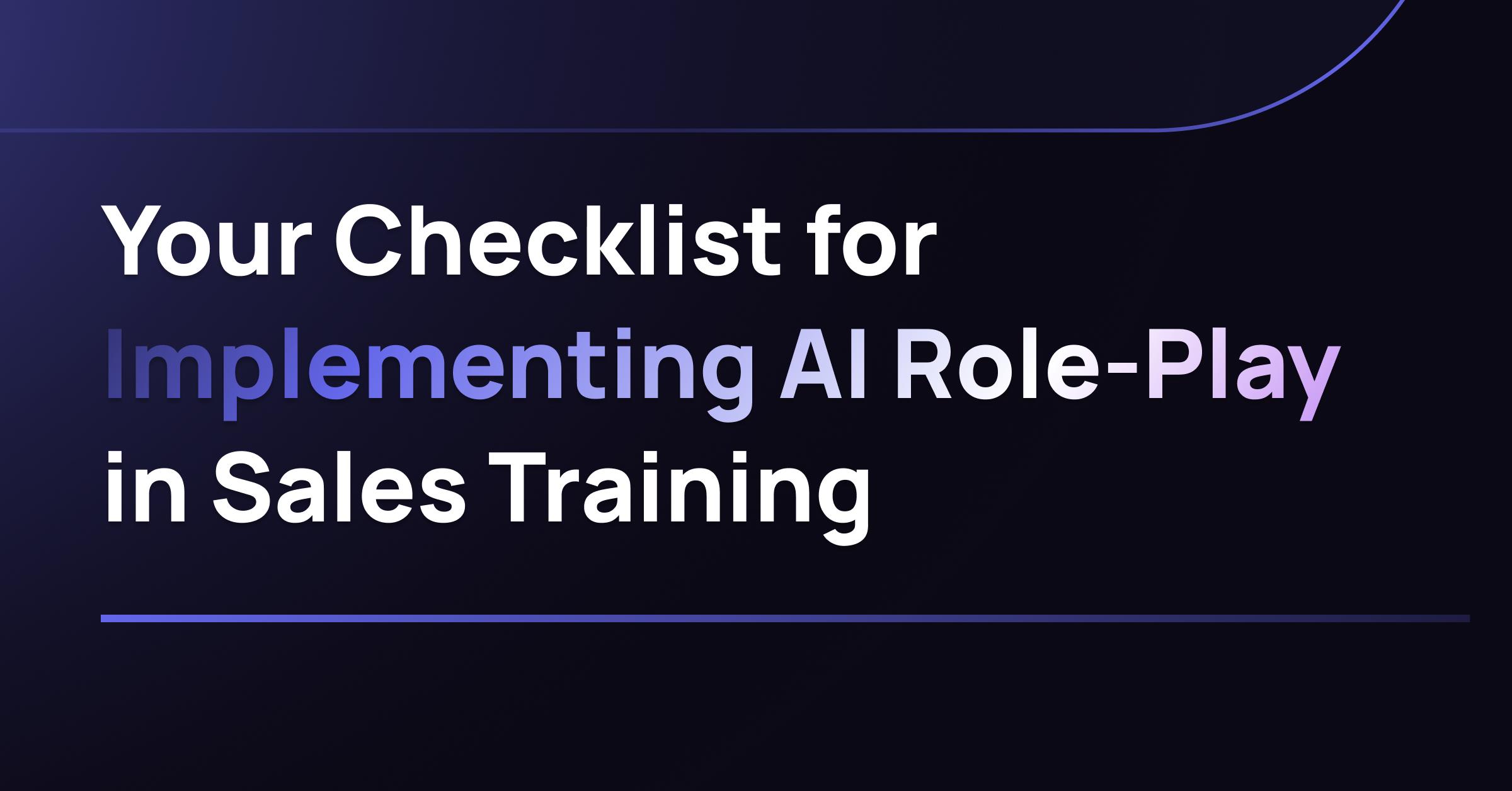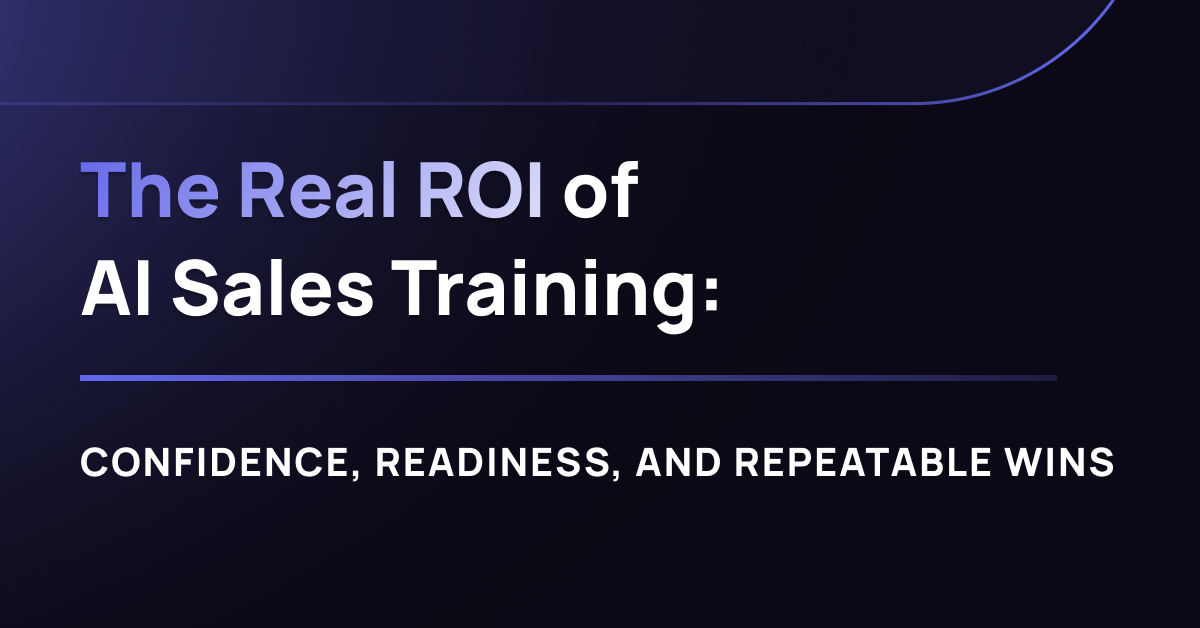If your current sales training system runs on process but not practice, you’re not alone.
Scorecards, dashboards, LMS modules, and 1:1 coaching templates—these tools bring structure. But structure without reps doesn’t drive readiness.
Let’s be honest: most sales training today is a content delivery system, not a skill development engine.
And that’s a problem. Because performance in the field isn’t powered by knowledge—it’s powered by confidence, adaptability, and muscle memory.
That only comes from practice.
Why Most Training Systems Plateau
Sales leaders often believe they have a “training system” because they’ve got:
- Onboarding checklists
- Recorded webinars
- Shadow sessions
- Quarterly certification events
- Coaching logs in their CRM
But here’s what’s usually missing: a consistent, scalable way for reps to practice selling.
Not watching. Not reading. Not talking about sales.
Actually selling.
Reps need a space to try, fail, adapt, and improve—before they do it live with customers.
If your reps only get better when they’re on calls, you’re gambling with revenue.
The Myth of “Learning by Doing”
Some leaders argue, “Reps learn on the job.”
Sure. But that’s like learning to box by stepping into the ring with a pro opponent. You’ll learn something, but you’ll take a beating in the process.
Training should prepare reps for the field, not depend on it.
And preparation means simulated experience. It means consistent, structured, measurable practice.
This is where most training systems fall short.
Introducing Practice-as-a-Platform
Enter a new category: AI-powered practice platforms like Copient.ai.
These tools don’t replace your existing systems—they activate them. They turn your content, scorecards, and coaching insights into real-world selling simulations.
Here’s what the right practice platform unlocks:
- Scenario-based training that reflects your sales process
- Unscripted simulations that force reps to think, adapt, and perform
- Automated feedback that coaches in real time
- Structured practice tracks that support onboarding, upskilling, and reinforcement
This turns your training from passive content consumption into active skill building.
Building the Engine: What It Looks Like
Let’s break down how to build a training engine with practice at the center.
1. Map Your Moments That Matter
Start by identifying the conversations that drive revenue:
- Discovery
- Objection handling
- Negotiation
- Product demos
- Competitive differentiation
These are the moments your reps need to master. Make them the foundation of your practice strategy.
2. Build Practice Tracks
Create structured sequences aligned to those moments:
- Week 1: Discovery fundamentals
- Week 2: Qualification conversations
- Week 3: Handling pricing objections
Each track should combine core scenarios, manager coaching checkpoints, and measurable outcomes.
3. Reinforce With Reps
Sales isn’t a one-and-done skill. Build weekly or bi-weekly “reps for reps” sessions into your team rhythm—using AI simulations that evolve with real buyer behavior.
4. Coach with Data
Use platform insights to identify where reps struggle—and where they’ve improved. Tie this directly into 1:1s, team coaching, and promotion criteria.
Why It Works
Practice drives confidence. Confidence drives performance.
This system:
- Accelerates onboarding by giving new reps high-frequency, low-risk reps
- Levels up tenured reps by focusing on real-world challenges
- Empowers managers with performance insights beyond call reviews
- Scales coaching without burning out frontline leaders
And it makes training feel like progress, not punishment.
Final Thought: From Training Events to Training Engines
Sales training shouldn’t be a quarterly event. It should be a continuous system—a performance engine running quietly (and powerfully) in the background.
That engine starts with structured, scalable practice.
Because reps don’t rise to the occasion. They fall to the level of their training.
Ready to build a system where reps actually train to win?
Let’s talk about how Copient.ai can help.

.png)




.png)
.png)
.png)











.png)



.avif)